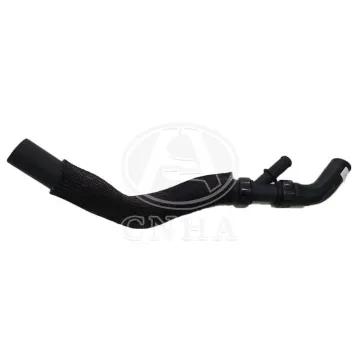Save on Rubber Hoses and Plastic Parts for Your Engine
Apr. 15, 2021
The heat within your engine bay is deadly – it turns rubber hoses brittle, causing them to crack and wear. Obviously, you want to use the strongest and most durable material for your engine hoses to prolong life, ensure operation, and avoid the possibility that you’ll be stranded on the side of the road. However, what’s the best material? Actually, there’s no single answer here. Hoses must be specially engineered for the task – you can’t use the same material in all parts of the engine.
Pressure
Hoses are generally used to carry fluid (although some are used for air and vacuum). Fluid flowing through hoses is pressurized. However, not all systems have the same amount of pressure in them. For instance, your radiator is pressurized, but nowhere near the level of your power steering system.
Trying to use the same rubber in your power steering system as is used on your radiator would be a huge mistake – it would blow out in a very short amount of time simply because of the pressure in the system (this is why power steering hoses have crimped clamps/fittings). The same applies to your brake system – these hoses must be engineered to withstand up to 5,000 PSI.
Fluid Types
Another consideration here is how well the material holds up to the fluid in question. Antifreeze is probably the least corrosive of your engine fluids, but even it will eat through your radiator hoses given enough time (hose failure is most common from the inside out). However, many systems use a type of mineral oil, which is highly volatile. Power steering fluid is actually flammable. Brake fluid is extremely corrosive. Both will eat through the wrong type of material and must have hoses specially designed and engineered for that specific type of fluid.

There is no one single material type that is better than another. Rubber might be the main component in your engine hoses, but it’s not the only one. Each system’s hoses are specially designed to withstand the fluid in question, the amount of pressure in the system, and the heat that they’re exposed to during normal operation.
Save on rubber hoses and plastic parts for your engine
Anyone who has looked under the bonnet of their car knows how greasy and dirty engine parts can become. Grease, oil and fluid build-up often leads to premature replacement of radiators, air conditioning hoses, belts and other rubber parts.
Plus, with a dirty engine, it can be difficult to tell if your vehicle is losing the hydraulic fluid it needs.
Using a car protector is an excellent way to maintain and extend the life of the rubber and plastic under the bonnet. It will also help if you like a shiny engine.
The first step is simple: clean the engine
You can perform the following steps at home or at a self-service car wash.
Spray the engine with degreaser according to the manufacturer's instructions.
Use a high-pressure hose to rinse off any built-up grease, oil and grime.
Wipe off the build-up with an old towel or blow dry with an air hose to make the engine as dry as possible.
Next, spray with protectant
After the engine has been cleaned, soak the entire compartment and cover all rubber, plastic and painted surfaces.
If you have an air hose, use a clean, absorbent cloth to blow the excess protectant down into the engine and dry the surfaces thoroughly. If you do not have an air hose, allow the protectant to sit for five minutes and then dry all surfaces thoroughly.
Avoid pouring water into the dispenser or unsealed electronic components.






